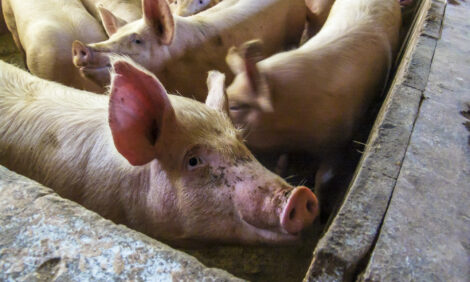



Pork Industry Continues Slow Expansion
US - On March 31 the USDA released the quarterly hog and pig report as of March 1, 2006. As expected the number of hogs nationally continues a modest increase, with approximately 1 percent growth in total hog inventories.|
John Lawrence |
Breeding hog numbers have increased to over 6 million head nationally, up 1.4 percent from a year ago (Table 1). Market hog numbers are currently at just over 54 million head, up more than half a percent. Among market swine, the number of heavy hogs weighing 180 pounds or more is up a 1.7 percent while other weights posted more modest gains or declined.
Expansion in the national swine breeding herd indicates that the industry may have cast off some of the caution it exhibited in the past two years. Previous reports had indicated little to no increases in the number of breeding animals. The inventory of breeding animals this March is 84,000 more than the year before. While at the same time the supply of market animals was increased by more pigs being produced annually per sow. The average litter size for the Dec-Feb pig crop was 9.03, 1 percent larger than the year earlier and the fourth quarter in a row with pigs per litter over 9.0.
Pig crops have been steadily increasing over the past several years. Last quarter’s pig crop was up 1.2 percent from the same quarter a year ago. Farrowing intentions over the next two quarters continue the story of increasing supplies. The number of sows expected to farrow from March to May is 0.5 percent over last year. June to August farrowing intentions are up only 0.2 percent from the same period in 2005.

Looking at Iowa specifically, the breeding herd is up 20,000 animals or nearly 2 percent and market hog inventories are only 1.2 percent higher. The number of feeder pigs, under 60 pounds, is up nearly 8 percent from a year ago, while the other market hog weight classes are down a percent or more. In general, Iowa hog numbers are increasing much faster then the nation on the whole.
Importation of feeder pigs has also increased the supply of market swine. First quarter swine importation from Canada was 15 percent greater than last year and very near 2003 levels. This increased importation is attributed to less controversy about feeder pig trade and more tariffs against US corn. Canadian feeder pig producers can send their pigs south and get a significantly better price. Canada has imposed a $1.65 per bushel tariff on US corn making it difficult for Canadian finishers to compete for feeders. There is a tariff rebate provision that allows Canadian finishers that feed US corn to get the tariff rebated if the hogs are shipped to the US for slaughter. As a result we may see an influx of Canadian slaughter hogs.
Looking into the coming year hog prices can be expected to be lower the previous two years. Table 2 contains the ISU forecasts for the next four quarters and the quarterly average futures prices based on the Friday close before the report was released. The futures forecast are adjusted for historic basis and converted to a live weight. It also contains the forecasted increases in pork supply, which is expected to continually increase.

Finished hog prices over the past three months have seen a significant decline. This trend can be attributed to not only an increasing supply of hogs but also increasing carcass weights and competition from beef and particularly poultry. Avian Influenza is slowing broiler exports and backing up low cost product in the US. Poultry production has been running approximately 4 percent higher than the same time in 2005 and poultry in cold storage is 22 percent higher at the end of February.
On the demand side, pork is seeing significant competition from poultry stocks. However, pork demand is still above the five year average. One positive thing for pork is continued strong exports to Asian nations. Japan re-closed their market to US beef in January, and there is only slight speculation that it will be reopened in the near future. This is saying nothing of regaining Japanese consumer confidence, which will take years if not decades. For the time being, pork exports were up 22 percent in 2005 with about 40 percent of it going to Japan.
In summary, pork prices seem to have a lot against them. Increased weights, animal numbers, imports, slowing demand and competition will all be pushing to depress prices. Exports will continue to add support to the market especially as pork becomes more affordable to foreign consumers. As for the profitability of hogs, black ink is still here through the summer but will fade in the fall. The ISU estimated returns for farrow to finish operations have shown profits over the past 26 months beginning February 2004. It is expected to remain profitable through August, but feed costs may arise as a concern for producers in the coming season.
Further Information
To view the latest USDA Quarterly Pigs and Hogs Report, click here
To continue reading this report, including graphs, click here (PDF)









